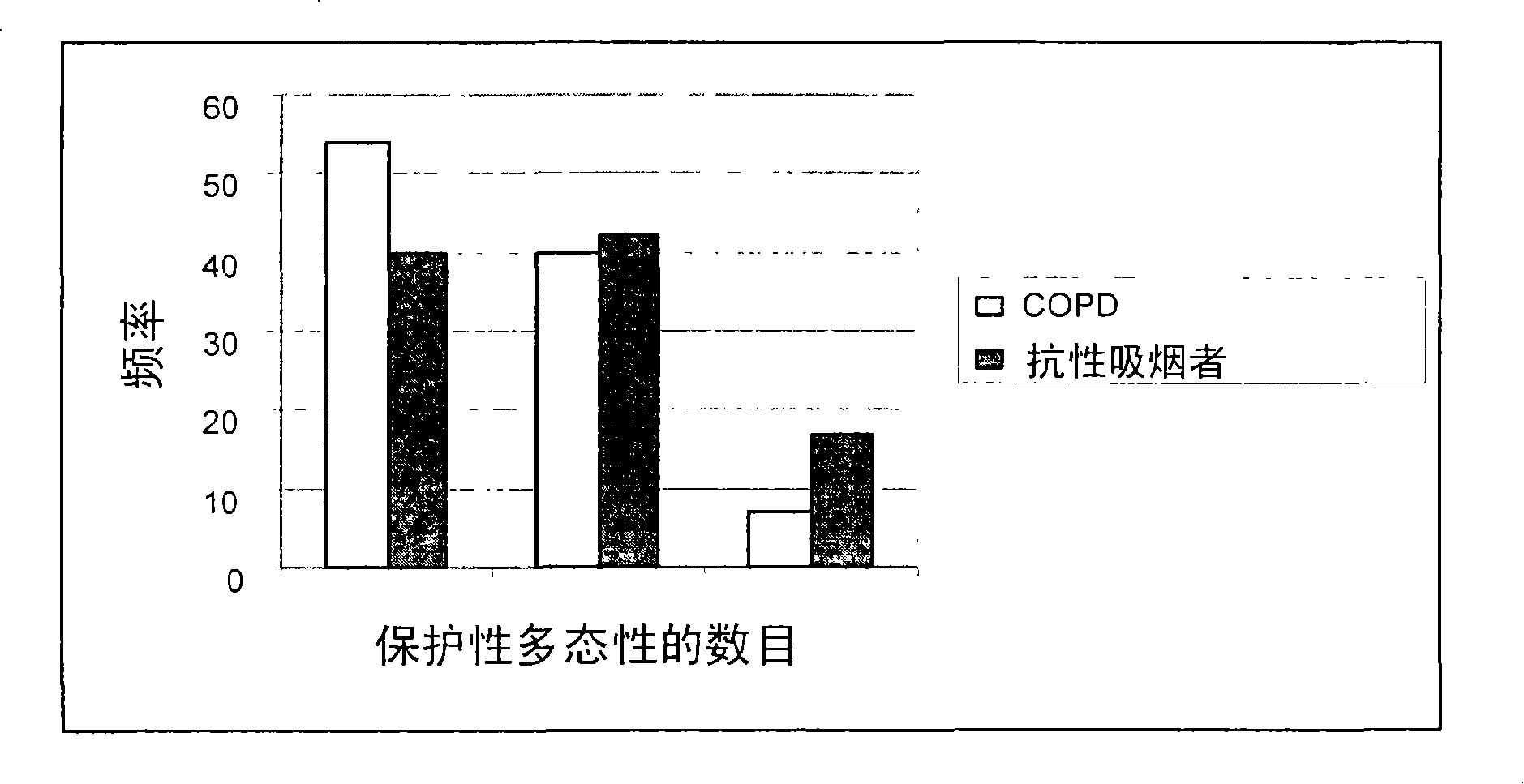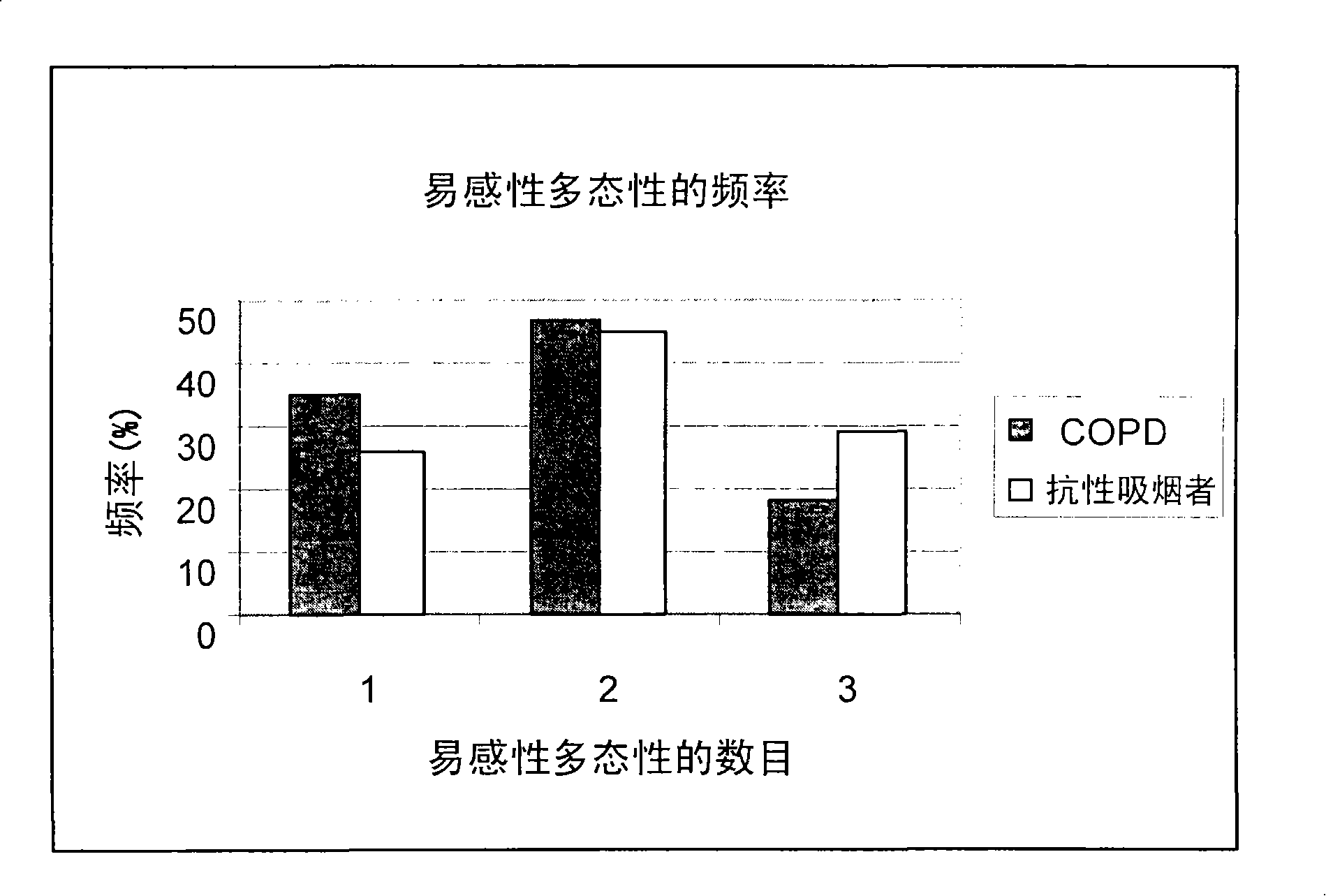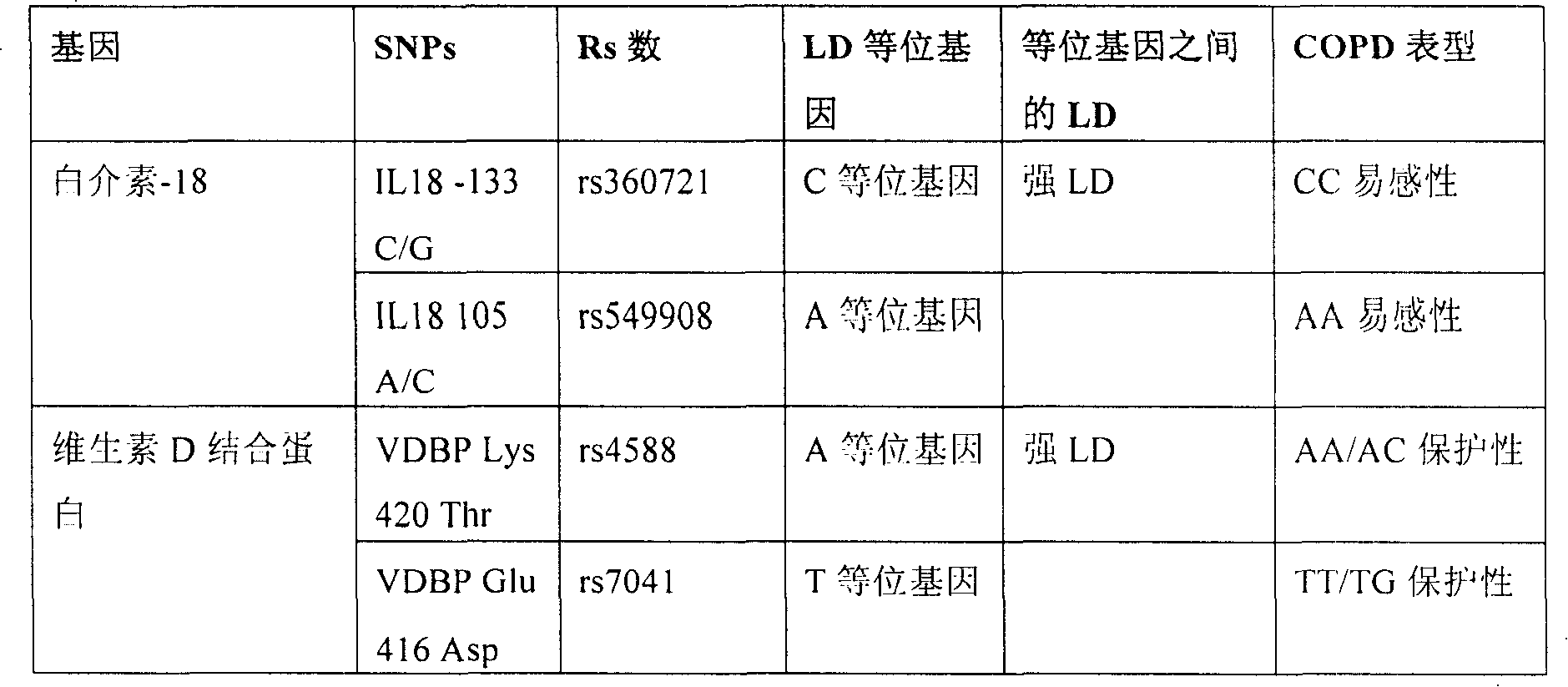Method for examining pulmonary function and abnormality and composition therefor
A technology for obstructive pulmonary disease and emphysema, applied in the direction of biochemical equipment and methods, microbiological measurement/testing, etc., can solve the problems of unable to significantly change the natural history of COPD, unavoidable exacerbation of shortness of breath, and limited success
- Summary
- Abstract
- Description
- Claims
- Application Information
AI Technical Summary
Problems solved by technology
Method used
Image
Examples
preparation example Construction
[0462] The present invention also relates to the preparation of kits used in the present invention. Suitable kits include various reagents used in the present invention in suitable containers and packaging materials, including tubes, vials, shrink-wrapped packages, and blow-molded packages.
[0463] Materials suitable for the contents of the exemplary kit of the present invention include one or more of the following materials: gene-specific PCR primer pairs (oligonucleotides) that anneal to the flanking DNA or cDNA sequence of the genetic polymorphism of interest; Reagents that can amplify specific sequence regions in genomic DNA or cDNA without the need for PCR; reagents needed to distinguish the differences between various possible alleles in sequence regions amplified by PCR or non-PCR amplification (E.g. restriction endonucleases, preferably oligonucleotides that anneal to one allele of the polymorphism, including those modified to contain enzymes or fluorescent chemical group...
Embodiment 1
[0475] Example 1: Case correlation study
[0476] Recruitment of objects
[0477] Recruiting subjects of European descent who have been smoking for at least 15 pack years and have been diagnosed with chronic obstructive pulmonary disease (COPD) by a doctor. Subject meets the following criteria: age over 50 years old and symptoms of shortness of breath appear after 40 years old; forced expiratory volume per second (FEV1) is the percentage of predicted value <70% and FEV1 / FVC ratio (forced expiratory volume per second / Forced vital capacity) <79% (measured by the American Thoracic Association standard). 294 subjects were recruited, of which 58% were men, the average FEV1 / FVC (±95% confidence interval) was 51% (49-53), and the average FEV1 as a percentage of the predicted value was 43 (41-45). The average age, number of cigarettes per day and pack-year history were 65 years (64-66), 24 cigarettes / day (22-25) and 50 pack-years (41-55), respectively. It also studied 217 European subjec...
PUM
 Login to View More
Login to View More Abstract
Description
Claims
Application Information
 Login to View More
Login to View More - R&D
- Intellectual Property
- Life Sciences
- Materials
- Tech Scout
- Unparalleled Data Quality
- Higher Quality Content
- 60% Fewer Hallucinations
Browse by: Latest US Patents, China's latest patents, Technical Efficacy Thesaurus, Application Domain, Technology Topic, Popular Technical Reports.
© 2025 PatSnap. All rights reserved.Legal|Privacy policy|Modern Slavery Act Transparency Statement|Sitemap|About US| Contact US: help@patsnap.com



